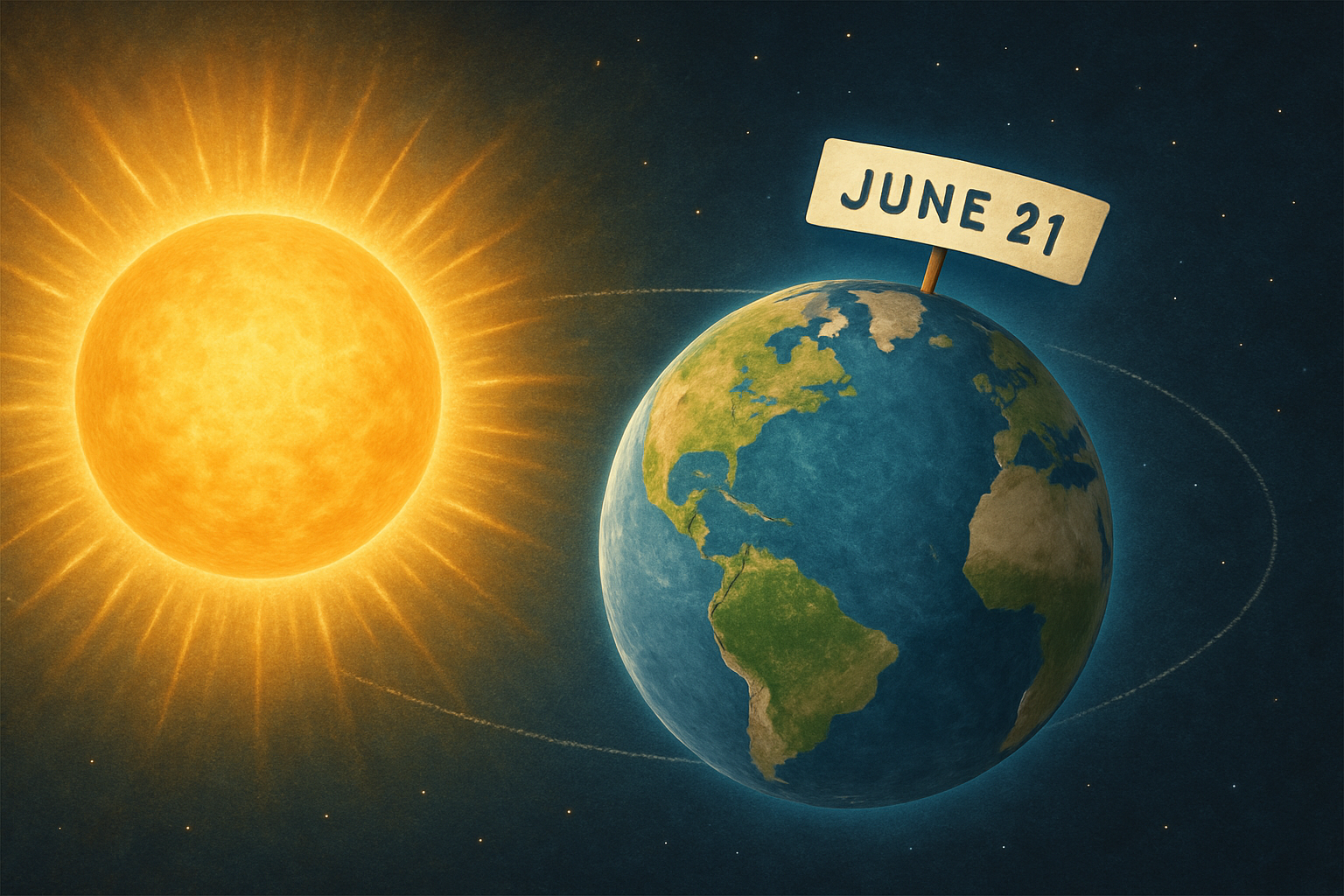
Every year, around June 21, something remarkable happens in our sky — the Summer Solstice. It’s the moment when the Sun reaches its highest point in the sky over the Northern Hemisphere, bringing us the longest day and shortest night of the year.
But this isn’t just a date — it’s a moment shaped by Earth’s tilt and orbit, woven into the natural rhythm of the seasons, and celebrated for thousands of years across many cultures.
To understand the solstice, we need to understand one key fact: Earth is tilted.
Our planet spins with a tilt of about 23.5°, which means that as we orbit the Sun, different parts of Earth receive more or less sunlight at different times of the year.
On June 21, the North Pole is tilted most directly toward the Sun. As a result:
The Sun appears highest in the sky at noon
The Tropic of Cancer (latitude 23.5° N) receives the Sun directly overhead
The Northern Hemisphere experiences its longest daylight hours
This is the Summer Solstice — a celestial turning point.
At solar noon on the solstice, the Sun is as high in the sky as it will ever get that year. That means your shadow is the shortest it will ever be.
This makes June 21 an ideal time for simple science experiments:
Make a sundial using a stick (gnomon)
Mark the shortest shadow at noon — it points true north
Explore how ancient cultures tracked time and direction
These shadow-based methods have been used since antiquity — including by the ancient Greeks to measure Earth’s circumference!
While we in the Northern Hemisphere celebrate light, our friends in the Southern Hemisphere are experiencing the Winter Solstice — their shortest day and longest night.
The Sun appears lowest in their sky, and shadows are at their longest. It’s cold, dark — but also a turning point back toward warmth.
This duality reminds us: seasons are caused by Earth’s tilt, not our distance from the Sun.
People around the world have noticed and celebrated this astronomical milestone for millennia:
Stonehenge, in England, aligns perfectly with the solstice sunrise.
The Inca honored the Sun god with Inti Raymi, a great festival at Cusco.
In Slavic regions, people dance and light fires during Kupala Night.
Scandinavian Midsummer includes flower crowns, feasts, and bonfires.
These traditions reflect awe for the Sun’s power and gratitude for its return.
Here’s the twist: June 21 is not the hottest day of the year.
That’s because of something called seasonal lag. Earth’s land and oceans take time to absorb all that solar energy. So while the light peaks in June, the heat usually peaks in July or August.
Think of it like an oven: the moment you turn it on, it doesn't get hot instantly — it builds up.
Want to observe the solstice in a meaningful way? Try this:
Watch the sunrise or sunset and notice how far north it is
Make a sundial and track shadow lengths
Take time to reflect — the solstice is a halfway marker in the year
Celebrate with fire, light, or a quiet moment under the sky
Whether alone or with others, take a moment to connect with the cosmos.
The Summer Solstice is a beautiful reminder of our planet’s tilt, motion, and place in space. It’s a moment when astronomy, history, and culture align — a time to appreciate the Sun, the Earth, and the intricate dance of seasons.
Wherever you are on Earth today, know this:
You’re part of a planet tilted just enough to create the diversity of seasons — and that’s something truly worth celebrating.
